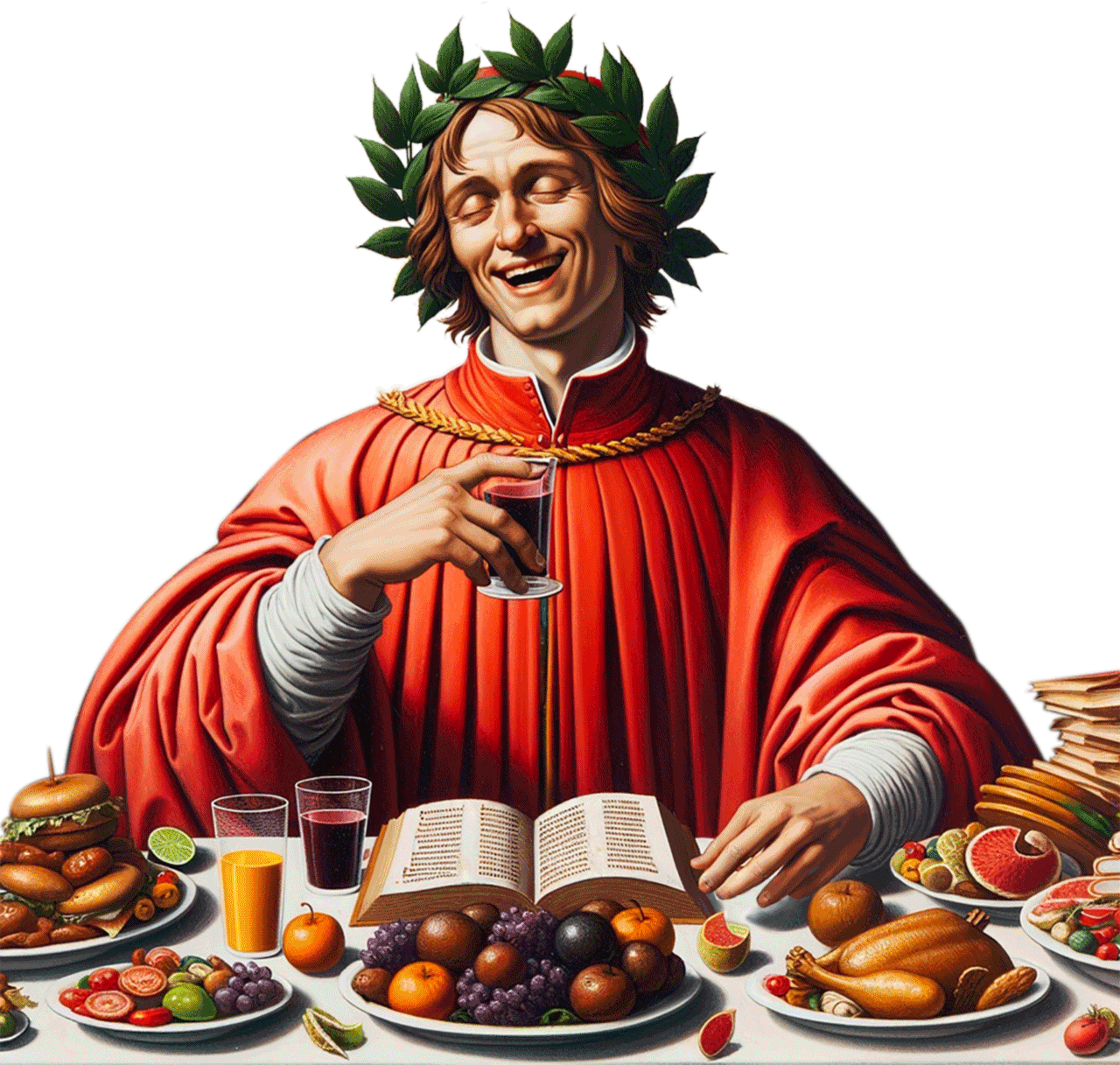Adopting a hen in the social henhouse is an initiative that combines ethics, environmental sustainability and social integration.

I met Giovanna Frosini, an expert in the history of the Italian language and a member of the Accademia della Crusca, when we were "colleagues" in the scientific working committee for the application dossier for Italian Cuisine to be recognised as UNESCO Intangible Cultural Heritage.
With her, I discovered the universe of gastronomic language, which is able to satiate not only the palate, but also the mind.
Professor Frosini is a brilliant person, able to engage and astonish with her research, which has an academic flavour, while also being intriguing and fascinating. She maintains that "Italian cuisine is not just flavours, but also the words that describe its essence. It is a mosaic of dialects and creativity, where every recipe, ingredient and technique reflects the identity of a specific community. This diversity, however, finds common ground in a shared love of tradition and culinary innovation. This is our strength: unity in diversity."
In a linguistic fabric woven with food and words, Giovanna Frosini rediscovers and promotes the roots of our language, demonstrating how gastronomic language is able to connect the past and the present, popular culture and high literature. Her research, which ranges from analysis of the works of Dante and Boccaccio to the work of Pellegrino Artusi, shows how cuisine and language share the same social, nourishing, evolutionary essence.
Giovanna Frosini asserts that "When we say "Speak as you eat", we remember that food is as essential as clear, direct communication. "When we are in a real 'pasticcio' (a hash or a pie)", we are faced with situations that merge and weave together like the ingredients of a delicious pie, reminding us that life, like food, can become complicated and challenging. And when it all ends 'a tarallucci e vino' (with tarallucci and wine, meaning 'all's well that ends well'), we find comfort in food and being together, just like when we try to restore harmony by sharing food and drink, celebrating the art of compromise and reconciliation."
Professor Frosini shows how culinary expressions can enrich our language, offering us a menu of metaphors and symbols that nourish our everyday conversations and strengthen the unbreakable bond between culture, language and food.
The linguist has set out on an ambitious mission to explore and document the evolution of the language of food and wine in our country. Through the Research Project of National Interest (PRIN) titled Atlas of the language and texts of Italian gastronomic culture (AtLiTeG), she wanted to trace a historical journey of the most significant cooking texts, from the Middle Ages until the Unification of Italy.
The goal of this project is to create a Historical Dictionary of Italian Gastronomic Language (VoSLIG) and an Atlas of Linguistic Representations based on a substantial number of culinary works, which offer a detailed panorama of the variations in dialects relating to food.
Local specialities, with their ancient recipes and unique products, make up a heritage that goes beyond taste, branching out into a universal language of exchange and recognition.
Indeed, Frosini's work highlights how food can be a powerful vehicle for communication, able to tell the story of a population and weave relationships between different cultures, keeping roots alive and nourishing the dialogue between the past and the future.
The diversity and richness of local expressions linked to food are also found in the concept of geosynonyms, which are different terms that refer to the same product (or similar products), such as the many names used for bread or the imaginatively inspired names for carnival sweets: bugie, galani, crostoli, cenci, donzelle, occhi, nuvole, castagnole, chiacchiere, frappe, sfrappole, lattughe.
For the same reason, but working in the opposite direction, many dialectal terms have become part of common Italian vocabulary, enriching it with words such as risotto, fontina, grissino, gorgonzola, panettone, tortellino, supplì and cassata, as evidence of the cultural and linguistic integration that characterises our nation.
It was with the Unification of Italy that we witnessed the phenomenon of a progressive standardisation of culinary terms and the creation of a national gastronomic identity.
The heterogeneity of Italian culinary traditions is not only reflected in the variety of names for dishes, but also deeply permeates the fabric of idiomatic expressions that enrich the Italian language. These expressions are precious testimonies of popular wisdom.
The world of breadmaking, for example, offers fertile ground for metaphors: "Rendere pan per focaccia" ('exchanging bread for focaccia', meaning 'tit for tat'), an expression with its roots in Boccaccio's Decameron, evokes the idea of reciprocity, sometimes with a hint of revenge. Other expressions such as "pane al pane" ('bread for bread', meaning 'calling a spade a spade'), "non essere pane per i propri denti" ('not bread for your teeth', meaning 'more than you can handle'), "guadagnarsi il pane" ('earning your daily bread') and "buono come il pane" ('as good as bread', meaning 'good-hearted') reflect the importance of bread in everyday life and culture, used to highlight concepts of intrinsic clarity, suitability, merit and goodness.
Giovanna Frosini also points out that "The reference to the Divine Comedy is also interesting, where Dante uses bread to express the difficulty and bitterness of exile: "You shall find out how salt is the taste of another man's bread" (Paradise, Canto XVII).
A powerful image that not only highlights the difference between the salted bread of Northern Italy and the traditional unsalted bread in Tuscany, but also conveys a sense of profound nostalgia and the difficulty of adapting to the customs and traditions of other places.

Our rich repertoire of expressions related to food therefore demonstrates that gastronomy is not just a matter of flavours and ingredients, but a true cultural code that interweaves with language, history and the identity of a population.
"Siamo arrivati alla frutta" ('we have reached the fruit', meaning 'we have come to the end of the meal'): our journey through the words and flavours of Italian culinary tradition has reached its end.
This voyage has not only explored the richness of our gastronomic lexicon, but has also revealed how deeply food is interwoven with our experiences of everyday life.
And, to put "la ciliegina sulla torta" ('the cherry on top'), we hope that these reflections have enriched your world and stimulated your curiosity, pushing you to search your memory for the infinite nuances that connect our identity to the dishes we put on the table.
Adopting a hen in the social henhouse is an initiative that combines ethics, environmental sustainability and social integration.
Caviro puts sustainability initiatives into action, interweaving culture, community and innovation in a journey of progress and collective wellbeing.
